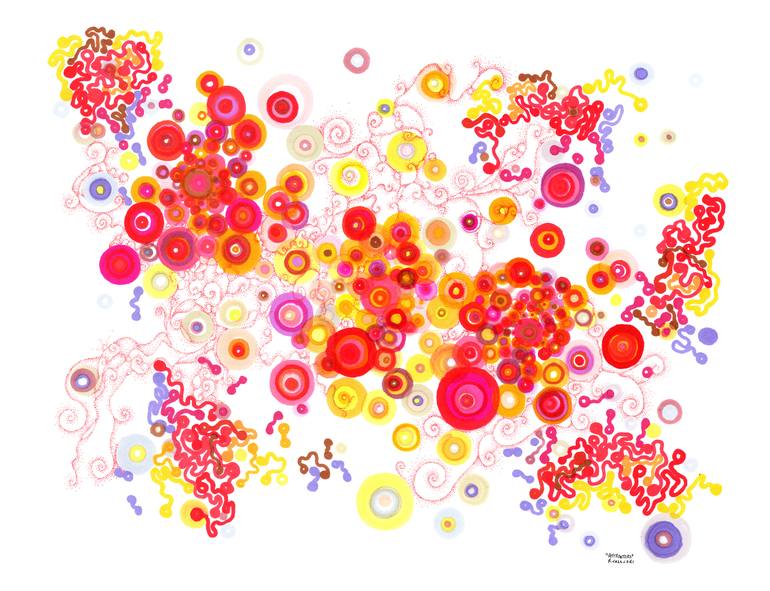


VIEW IN MY ROOM
Attractors Drawing
United States
Drawing, Ink on Paper
Size: 14 W x 11 H x 0.1 D in
Ships in a Box
Artist Recognition

Artist featured in a collection
About The Artwork
Ink on paper (hand drawn, no computer). Archival Prismacolor art markers and sakura pigma micron felt tip ultrafine pens on acid free RENDR coated paper An artists playful depiction of several attractors . In non-linear physics and mathematics, the various states of a system are sometimes mapped out with paths plotted for how the state of the system can change in parameter space. While the mathematics of non-linear systems can be very hard to understand, these mapping often reveal patterns. One possible pattern is a group of set points for the system, where it is stable. Sometimes all of the paths along which the system can evolve lead to a small number of stable setpoints that seemingly pull in or attract all possible trajectories for the evolution of the system. The attractors in "Attractors" a nascent spirals formed by the circles and stippled paths on the page.
Details & Dimensions
Drawing:Ink on Paper
Original:One-of-a-kind Artwork
Size:14 W x 11 H x 0.1 D in
Frame:Not Framed
Ready to Hang:Not applicable
Packaging:Ships in a Box
Shipping & Returns
Delivery Time:Typically 5-7 business days for domestic shipments, 10-14 business days for international shipments.
Handling:Ships in a box. Artists are responsible for packaging and adhering to Saatchi Art’s packaging guidelines.
Ships From:United States.
Have additional questions?
Please visit our help section or contact us.
United States
I am offering a selection of Abstracts and abstracted Science theme work on Saatchi. Please search for me online for my Landscape and Tree of Life bodies of work. I often ask myself whether I'm a physical scientist who also paints, or a painter who has studied a bit too much physics and chemistry. Physics and Chemistry have become a big part of how I model and understand the world. I approach paint texture in terms of it's viscoelastic properties, and color in terms of pigments and their spectra. If you take a cadmium inorganic red and it's organic substitute, gently tweak them so they look almost identical in indirect daylight, will they behave differently in incandescent light? Sunlight? Late afternoon light? (controlled lab light?) Unlike people, fruit, landscapes and other traditional painting subjects, technical ideas and objects don't have an "appearance" in any normal sense of imagery. They're imagined and depicted as visual ideas that guide us through complex phenomena. For example what do like bonds in molecules really look like? Or the quantum not-quite-existence of high vacuum-spawned subatomic particles? The softly dancing dynamic structures in complex fluids? What about "things" that are too small and too delicate for even the best electron microscopes (TEM - SEMs are toys)? I've found that many images scientists create serve as visual similes to data and hypotheses, and as visual metaphors for complex and often highly abstract concepts. These metaphors and their stylized interpretation inspire and guide my "abstract" work.
Artist Recognition

Artist featured by Saatchi Art in a collection
Thousands Of Five-Star Reviews
We deliver world-class customer service to all of our art buyers.
Global Selection
Explore an unparalleled artwork selection by artists from around the world.
Satisfaction Guaranteed
Our 14-day satisfaction guarantee allows you to buy with confidence.
Support An Artist With Every Purchase
We pay our artists more on every sale than other galleries.
Need More Help?